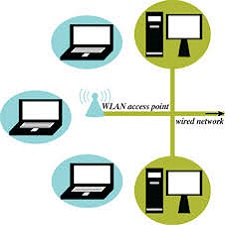توضیحات
ABSTRACT
This study investigated the hospital waste management practices used by eight randomly selected hospitals located in Damanhour City of El-Beheira Governorate and determined the total daily generation rate of their wastes. Physico-chemical characteristics of hospital wastes were determined according to standard methods. A survey was conducted using a questionnaire to collect information about the practices related to waste segregation, collection procedures, the type of temporary storage containers, on-site transport and central storage area, treatment of wastes, off-site transport, and final disposal options. This study indicated that the quantity of medical waste generated by these hospitals was 1.249 tons/day. Almost two-thirds was waste similar to domestic waste. The remainder (38.9%) was considered to be hazardous waste. The survey results showed that segregation of all wastes was not conducted according to consistent rules and standards where some quantity of medical waste was disposed of with domestic wastes. The most frequently used treatment method for solid medical waste was incineration which is not accepted at the current time due to the risks associated with it. Only one of the hospitals was equipped with an incinerator which is devoid of any air pollution control system. Autoclaving was also used in only one of the selected hospitals. As for the liquid medical waste, the survey results indicated that nearly all of the surveyed hospitals were discharging it in the municipal sewerage system without any treatment. It was concluded that the inadequacies in the current hospital waste management practices in Damanhour City were mainly related to ineffective segregation at the source, inappropriate collection methods, unsafe storage of waste, insufficient financial and human resources for proper management, and poor control of waste disposal. The other issues that need to be considered are a lack of appropriate protective equipment and lack of training and clear lines of responsibilities between the departments involved in hospital waste management. Effective medical waste management programs are multisectoral and require cooperation between all levels of implementation, from national and local overnments to hospital staff and private businesses.
INTRODUCTION
Medical establishments play important roles in different activities by the use of modern technology to restore and maintain community health through different departments in the establishment and its firms. Medical establishments include hospitals, clinics, medical centres, private practices, home health care, blood banks, veterinary offices, clinical facilities, research laboratories, clinical laboratories, and all unlicensed and licensed medical facilities (Labib et al., 2005).
چکیده
در این تحقیق، شیوه های مدیریت زباله های بیمارستانی که توسط هشت بیمارستان تصادفی انتخاب شده در استان دمنور شهر البحیرا مورد استفاده قرار گرفته است، میزان کل تولید روزانه زباله های آنها را تعیین می کند. خصوصیات فیزیکی و شیمیایی زباله های بیمارستان بر اساس روش های استاندارد تعیین شد. یک بررسی با استفاده از پرسشنامه برای جمع آوری اطلاعات در مورد شیوه های مربوط به جداسازی زباله، روش های جمع آوری، نوع ظروف ذخیره سازی موقت، حمل و نقل در محل و ذخیره سازی مرکزی، درمان زباله ها، حمل و نقل خارج از محل و گزینه های دفع نهایی انجام شد . این مطالعه نشان می دهد که میزان زباله های پزشکی این بیمارستان ها 249 تن در روز است. تقریبا دو سوم مواد زائد مشابه ضایعات خانگی بود. باقی مانده (9/38 درصد) به عنوان زباله خطرناک در نظر گرفته شد. نتایج این تحقیق نشان داد که جداسازی تمام زباله ها با توجه به قوانین و مقرراتی که در آن برخی از ضایعات پزشکی با زباله های خانگی دفن می شدند، انجام نمی شد. شایعترین روش درمان برای زباله های پزشکی جامد، سوزاندن است که در زمان فعلی با توجه به خطرات مرتبط با آن قابل قبول نیست. فقط یکی از بیمارستان ها مجهز به یک کوره شستشو بود که هیچ سیستم کنترل آلودگی هوا ندارد. Autoclaving نیز تنها در یکی از بیمارستان های انتخاب شده مورد استفاده قرار گرفت. در مورد ضایعات مایع پزشکی، نتایج بررسی ها نشان داد که تقریبا تمام بیمارستان های مورد بررسی بدون آنکه درمان شوند، آن را در سیستم فاضلاب شهری تخلیه می کنند. به این نتیجه رسیدیم که ناکافی بودن در شیوه های مدیریت زباله های بیمارستان در شهر دمنه عمدتا مربوط به جداسازی بی رویه در منبع، روش های جمع آوری نامناسب، ذخیره سازی بی خطر از ضایعات، نبود منابع مالی و انسانی برای مدیریت مناسب و کنترل ضعیف دفع زباله است . مسائل دیگری که باید مورد توجه قرار گیرند، فقدان تجهیزات حفاظتی مناسب و عدم آموزش و خط مشی روشن بین مسئولیت های اداری مربوط به مدیریت زباله های بیمارستان است. برنامه های مدیریت اثربخش در زمینه مدیریت زباله های پزشکی چند منظوره هستند و نیازمند همکاری بین تمام سطوح اجرای، از واحدهای ملی و محلی به کارکنان بیمارستان و شرکت های خصوصی است.
مقدمه
موسسات پزشکی با استفاده از تکنولوژی مدرن برای بازگرداندن و حفظ سلامت جامعه از طریق ادارات مختلف در تاسیسات و شرکت های آنها نقش مهمی در فعالیت های مختلف ایفا می کنند. موسسات پزشکی عبارتند از بیمارستان ها، کلینیک ها، مراکز پزشکی، مراکز خصوصی، مراکز بهداشتی درمانی، بانک های خون، ادارات دامپزشکی، مراکز بالینی، آزمایشگاه های تحقیقاتی، آزمایشگاه های بالینی و تمام امکانات پزشکی بدون مجوز و مجوز (Labib et al 2005).
Year: 2010
Publisher : ELSEVIER
By : Magda Magdy Abd El-Salam
File Information: English Language/ 12 Page / size: 353 KB
Only site members can download free of charge after registering and adding to the cart
سال : 1389
ناشر : ELSEVIER
کاری از : مجددا مجیدی عبدالسلام
اطلاعات فایل : زبان انگلیسی / 12 صفحه / حجم : KB 353


![Hospital waste management in El-Beheira Governorate, Egypt[taliem.ir]](https://taliem.ir/wp-content/uploads/Hospital-waste-management-in-El-Beheira-Governorate-Egypttaliem.ir_.jpg)





![Value drivers of corporate eco-efficiency Management[taliem.ir]](https://taliem.ir/wp-content/uploads/Value-drivers-of-corporate-eco-efficiency-Managementtaliem.ir_-1-150x150.jpg)
![Nanowastes and the environment Potential new waste management paradigm[taliem.ir]](https://taliem.ir/wp-content/uploads/Nanowastes-and-the-environment-Potential-new-waste-management-paradigmtaliem.ir_-150x150.jpg)
نقد و بررسیها
هنوز بررسیای ثبت نشده است.